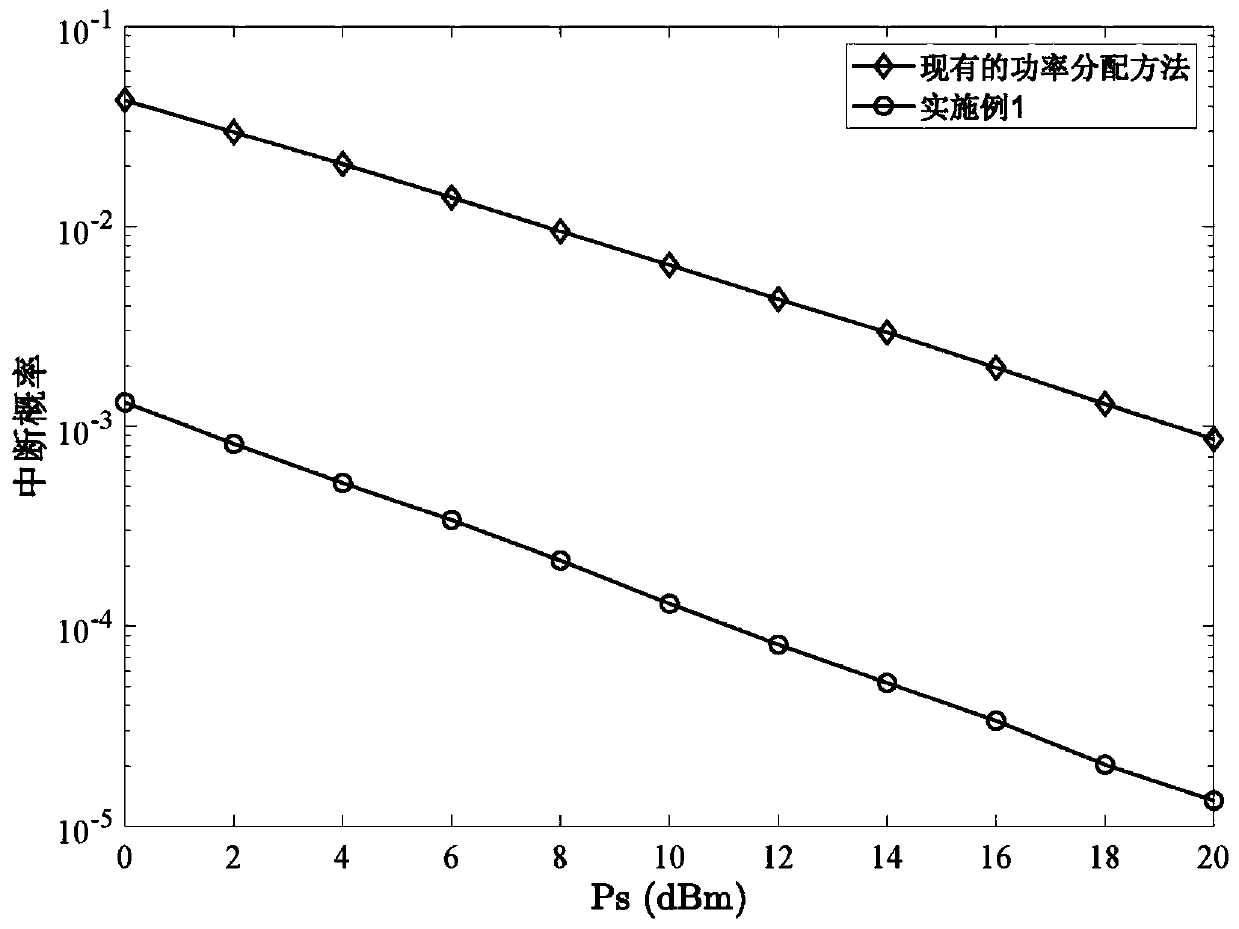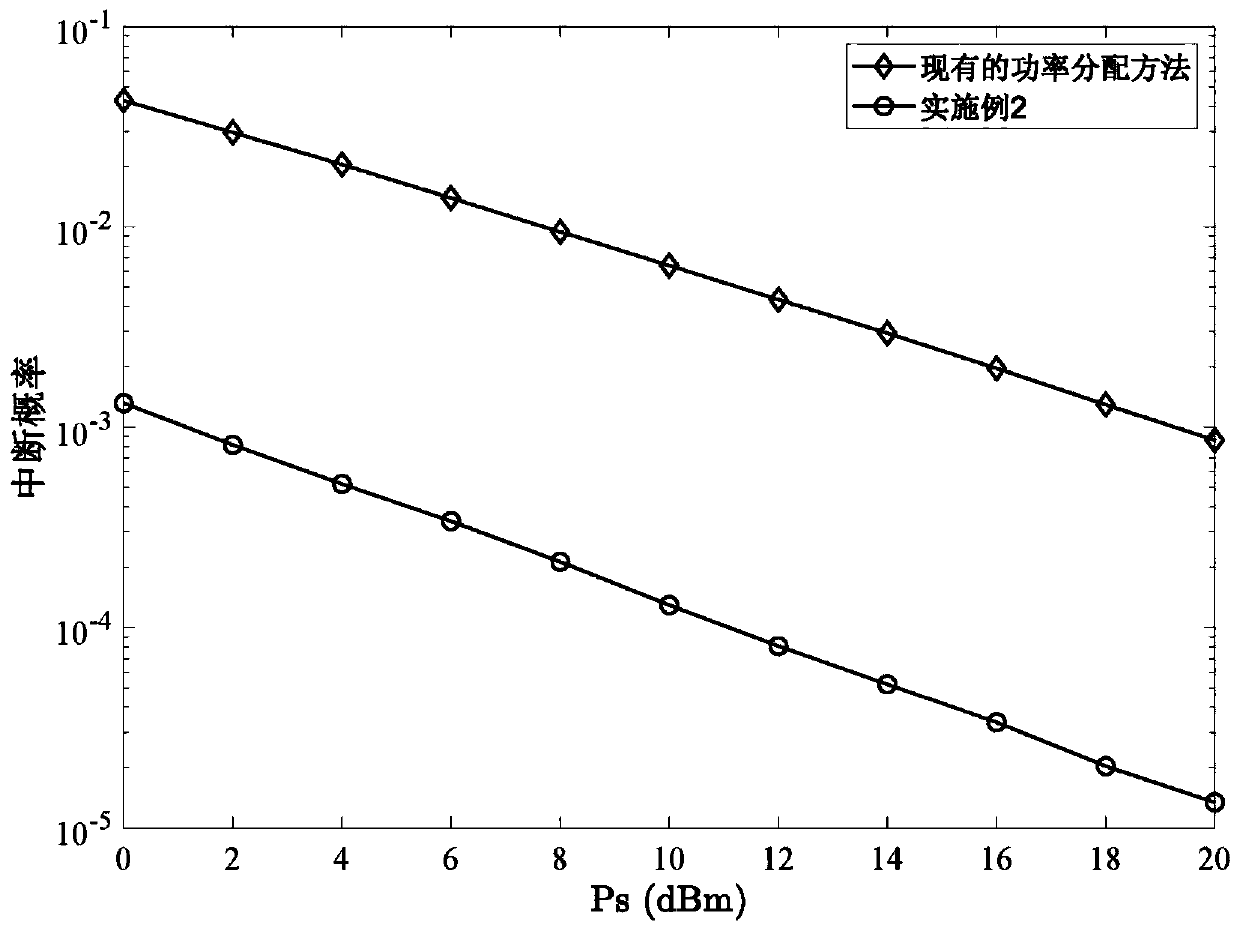Resource allocation method of wireless energy collection type full duplex cooperative relay system
A wireless energy and cooperative relay technology, applied in the field of energy-carrying communication, can solve problems such as unreasonable transmission signal modeling and poor system performance, and achieve the effect of simple method, good interrupt performance and reasonable resource allocation
- Summary
- Abstract
- Description
- Claims
- Application Information
AI Technical Summary
Problems solved by technology
Method used
Image
Examples
Embodiment 1
[0044] exist figure 1 Among them, the resource allocation method of the wireless energy harvesting type full-duplex cooperative relay system in this embodiment consists of the following steps:
[0045] (1) Build a transmission signal model
[0046] Use a full-duplex cooperative relay system to transmit information. The system includes a source node, a full-duplex relay node, and a target node. Both the source node and the target node are equipped with a single antenna, and the full-duplex relay node configuration There are two antennas for sending and receiving, and each transmission cycle is divided into two time slots. In the first time slot, the source node sends information flow to the full-duplex relay node and the target node, and in the second time slot, the source node sends energy flow to the full-duplex relay node, and at the same time, the full-duplex relay node uses the received energy to decode and forward the information flow to the target node, generating echo ...
Embodiment 2
[0069] The resource allocation method of the wireless energy harvesting type full-duplex cooperative relay system in this embodiment consists of the following steps:
[0070] (1) Build a transmission signal model
[0071] This step is the same as in Example 1.
[0072] (2) Estimate channel state prediction information
[0073] This step is the same as in Example 1.
[0074] (3) Determine the power allocation coefficient α for each transmission cycle
[0075] This step is the same as in Example 1.
[0076] (4) Determine the time slot allocation coefficient β for each transmission cycle
[0077] Set up the equation as follows:
[0078]
[0079] Among them, η is the conversion efficiency, which depends on the energy conversion efficiency and the energy cost of decoding information. Use the golden section method of the one-dimensional search method to determine the time slot allocation coefficient β of each transmission cycle, and compare the first β according to β:1-β Th...
Embodiment 3
[0083] The resource allocation method of the wireless energy harvesting type full-duplex cooperative relay system in this embodiment consists of the following steps:
[0084] (1) Build a transmission signal model
[0085] In step (1) of constructing the transmission signal model, the P S is the transmission power of each transmission cycle, and the values are not equal. The other steps of this step are the same as in Example 1.
[0086] Other steps are the same as in Example 1. Complete the resource allocation of the wireless energy harvesting full-duplex cooperative relay system.
PUM
 Login to View More
Login to View More Abstract
Description
Claims
Application Information
 Login to View More
Login to View More - R&D
- Intellectual Property
- Life Sciences
- Materials
- Tech Scout
- Unparalleled Data Quality
- Higher Quality Content
- 60% Fewer Hallucinations
Browse by: Latest US Patents, China's latest patents, Technical Efficacy Thesaurus, Application Domain, Technology Topic, Popular Technical Reports.
© 2025 PatSnap. All rights reserved.Legal|Privacy policy|Modern Slavery Act Transparency Statement|Sitemap|About US| Contact US: help@patsnap.com



